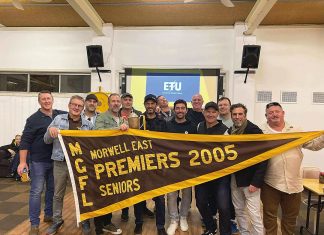The Traralgon secession movement is on the brink of revival, with a community group again pushing for the town to break away from Latrobe City Council.
Traralgon Community Development Association has called on the State Government to allow residents to vote on whether they would like to form their own municipality based on the boundaries of the former shire and city of Traralgon. But the government says it has no intention to restructure municipalities in Gippsland.
It follows the release of a council document which shows council has collected about $76 million in rates from the 3844 postcode over the last four years and spent about $12 million on capital works there.
The postcode covers Traralgon, Traralgon East, Callignee, Flynn, Koornalla, Loy Yang, Traralgon South and Tyers.
“Ever since this council was set up, we have had grave concerns about where Traralgon’s money was going. This is absolute proof,” Association president Bill McMahon said.
“If you read closely, for every dollar Traralgon puts in, we get back approximately 16 and-a-half cents.”
The figures only relate to capital expenditure – meaning major building and infrastructure projects – and excludes council’s day-to-day services like road maintenance, grass-cutting, libraries, childcare and kerbside garbage collection.
Capital works projects make up less than 20 per cent of total annual council expenditure and the figures could also include state and federal government contributions to projects.
Mr McMahon said his group had requested the town-based figures since council amalgamation in 1994, but had previously been told by council that it “wasn’t possible to provide them”.
Latrobe City acting chief executive John Mitchell confirmed he made the information available in the interest of transparency.
The spreadsheet reveals rate revenue collected from the 3825 postcode – representing Moe, Hernes Oak, Moe South, Newborough, Tanjil South, Yallourn and Yallourn North – over the past four years equated to about $35 million, with council spending about $24 million in capital works there.
Morwell and surrounding towns including Hazelwood, Driffield, Jeeralang, Jeeralang Junction, Hazlewood North, Maryvale and Hazelwood South, paid about $39 million in rates and got more than $11 million in capital expenditure, while Churchill paid $8.3 million and saw a more than $7 million return.
Mr McMahon said he was not opposed to other towns receiving their fair share capital works funding.
“We’re not attempting to drive a wedge between the towns,” he said.
“Council are the ones that have created the division.”
He said projects including construction of an indoor swimming pool for Traralgon and “substantial work” at the recreation reserve had not been attended to.
The last secession calls by the group in 2010 resulted in a Victorian Electoral Commission review of ward boundaries within Latrobe, which saw the nine ward, nine councillor structure scrapped in favour of four larger wards.
Mr McMahon said this had gone some of the way to providing more equity, but his group would continue its push for secession.
“The simple fact is that this amalgamation has never worked and it never will,” he said.
Mr Mitchell said councils had to have regard for the size of populations, and what that group was contributing in rates.
He said there were times when regions had to “take their turn” as a priority for projects.
“I understand that some interest groups have been very patient and I can tell you that the council are acutely aware of that,” he said.
Mr Mitchell said while the Moe railway revitalisation was the “flagship” project in the 2014/15 budget, the indoor aquatic centre at Traralgon and master plan for the town’s recreation reserve remained on council’s agenda.
He encouraged the Traralgon group to address council at one of its dedicated public presentation sessions.
“If there is any sect of the Latrobe City community that feels aggrieved, then my first recommendation is that the council and community sit down and try and sort it out.”
Mr Mitchell was the first permanent chief executive of the amalgamated Latrobe Valley councils in 1995 and said he personally supported amalgamation.
He said allowing Traralgon to secede was a matter for the State Government.
According to council figures, in 2011, the Traralgon population was more than 26,000, Churchill had about 5000 people, the Moe population was more than 9000, Newborough had almost 7000 people and Morwell had more than 14,000.
A council budget working paper shows the median house price for an average Traralgon home based on 2012 calculations was $286,000, while an average Moe home was $180,000 and an average Morwell home was $182,000.
Average Churchill homes were $214,000.
Local Government Minister Tim Bull said he was aware of concerns raised by a section of the Traralgon community about the delivery of a fair share of community services and infrastructure. “If the Taralagon community is concerned about their council’s performance in any area, I encourage them to discuss these concerns directly with the council,” Mr Bull said. “The Victorian Coalition Government is focused on implementing major reforms to improve council governance, performance reporting and enhance the integrity of local government elections and has no intention of restructuring municipalities in Gippsland.”











